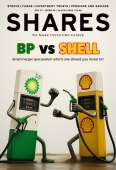Archived article
Please note that tax, investment, pension and ISA rules can change and the information and any views contained in this article may now be inaccurate.
Why it is time to look at L’Oreal

L’Oreal (OR:EPA) €361.30
Market cap: €193 billion
An 11.5% one-year share price decline at French cosmetics giant L’Oreal (OR:EPA) presents investors with a beautiful opportunity to buy a high-quality global business, with a track record of solid organic growth and smart acquisitions, trading at a substantial valuation discount.
A core beauty pick rewarding investors with progressive dividends and share buybacks, L’Oreal faces short-term challenges in China and North America and tariff worries weigh on sentiment toward the stock.
Yet L’Oreal’s gross margins are wide enough to absorb tariff hikes, and the €193 billion cap remains well-placed for long-term growth driven by price increases and premiumisation, and offers a play on the rapidly-growing dermatological beauty market too, since consumers are eager to slow the effects of ageing on their skin.
2025’s beauty industry slowdown is priced in and Shares sees scope for a re-rating, possibly starting with L’Oreal’s first-half results (29 July), should analysts feel sufficiently confident to upgrade full-year estimates, perhaps drawing confidence from improving trends in North America and China.
YOU’RE BEAUTIFUL
Paris-listed L’Oreal is the world’s largest cosmetics and beauty company with a focus on hair colour, skincare, sun protection, make-up, perfumes and haircare.
Backed by the Bettencourt family, the beauty behemoth’s investment attractions are spearheaded by its flotilla of strong brands including L’Oreal Paris, Yves Saint Laurent and Maybelline New York, not to mention Garnier and luxury beauty brand Aesop, the latter with significant growth potential in China and travel retail.
These powerful brands confer pricing power on a business with a successful innovation pipeline which delivers high returns on equity and has a record of outperforming global beauty market rivals.
Bulls believe L’Oreal’s marketing excellence – the company is the largest advertiser in the beauty industry by some stretch - and unrivaled brand portfolio will drive accelerating market share gains and higher profitability over time.
PRETTY RESILIENT
While the global beauty market has undergone a post-pandemic normalisation, consumers continue to set aside cash for affordable luxuries such as cosmetics which make them feel good about their appearance and add a little glamour to their lives.
One reason for this is the resilience cosmetics tend to exhibit through economic cycles, often referred to as ‘the lipstick effect’, based on the evidence consumers are willing to treat themselves to little luxuries during tough times.
Growth drivers for cosmetics include the widespread increase in the use of skincare and personal care products along with a burgeoning global ageing population.
Rising financial independence among women and increasing beauty awareness among men are additional drivers, and there are long-run growth opportunities for cosmetics leaders like L’Oreal in emerging markets including China.
Another market driver is social media, where influencers on Instagram and TikTok can boost demand for new cosmetics products.
Led by chief executive Nicolas Hieronimus, L’Oreal has a track record of best-in-class execution and should continue to deliver organic sales growth above the household and personal care average over the medium to long term.
Results for the first quarter of 2025 (publsihed 17 April) showed solid 3.5% like-for-like growth with the group ‘moderately’ outperforming a tougher global beauty market.
‘In what has been a particularly challenging and volatile operating environment, L’Oreal has started the year with growth in line with our projections,’ said Hieronimus.
‘There were some good and some less good surprises: the US was more challenging than anticipated, while China was slightly better than expected. Europe was, once again, our single largest growth contributor and emerging markets remained dynamic.’
AND LOOKING CHEAP
L’Oreal has suffered a de-rating with growth slowing due to a tougher consumer backdrop and the market worried about continued weakness in China as well as the impact of Trump’s tariffs on the business.
Risks to consider include a delayed or smaller-than-expected recovery in the Chinese beauty market, or the potential for trade tensions to escalate in Asia and for Western beauty brands to become less desirable as a result, which could have a negative effect on growth forecasts.
For the current year to December, the consensus calls for a slight dip in earnings per share from €12.90 to €12.80 ahead of a rebound to €13.90 in 2026.
Based on next year’s estimates, L’Oreal shares are cheap relative to their own history on a forward multiple of 26 times, significantly below the stock’s 35-year mean valuation of 37 times, reversion to which would imply a share price of €514, more than 40% above current levels.
Important information:
These articles are provided by Shares magazine which is published by AJ Bell Media, a part of AJ Bell. Shares is not written by AJ Bell.
Shares is provided for your general information and use and is not a personal recommendation to invest. It is not intended to be relied upon by you in making or not making any investment decisions. The investments referred to in these articles will not be suitable for all investors. If in doubt please seek appropriate independent financial advice.
Investors acting on the information in these articles do so at their own risk and AJ Bell Media and its staff do not accept liability for losses suffered by investors as a result of their investment decisions.

 magazine
magazine